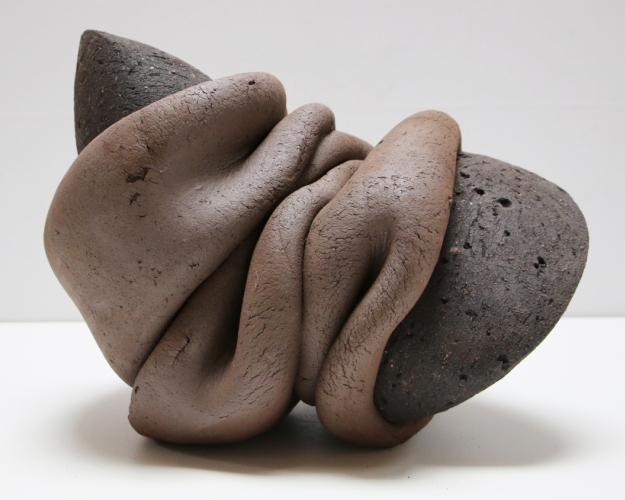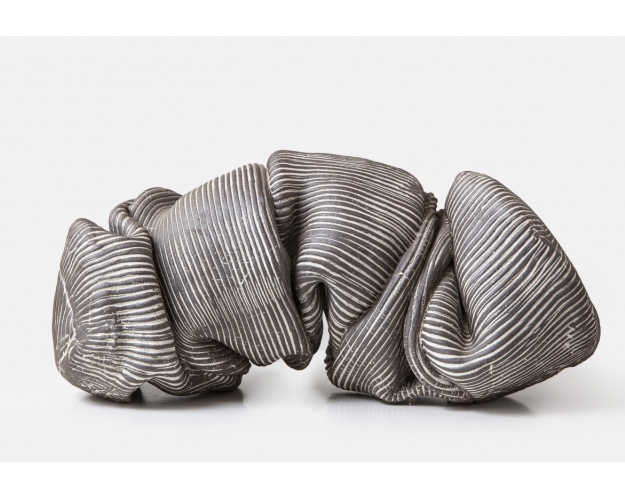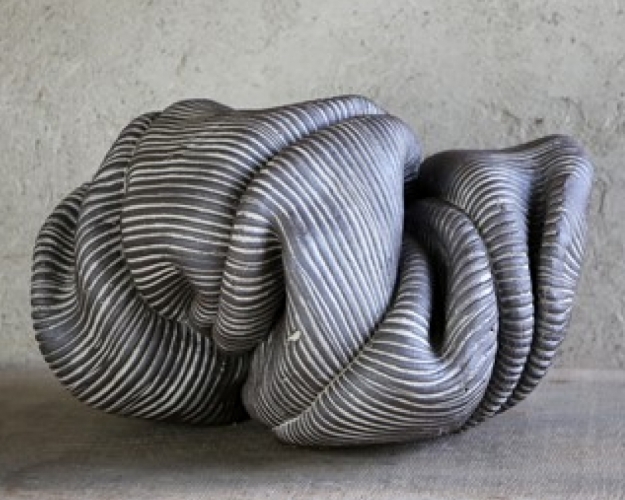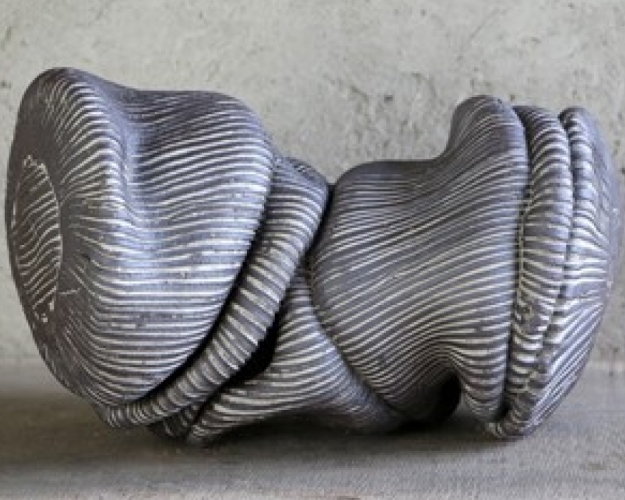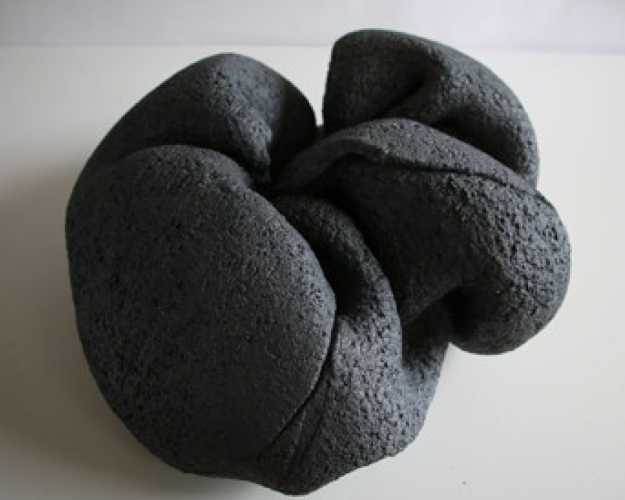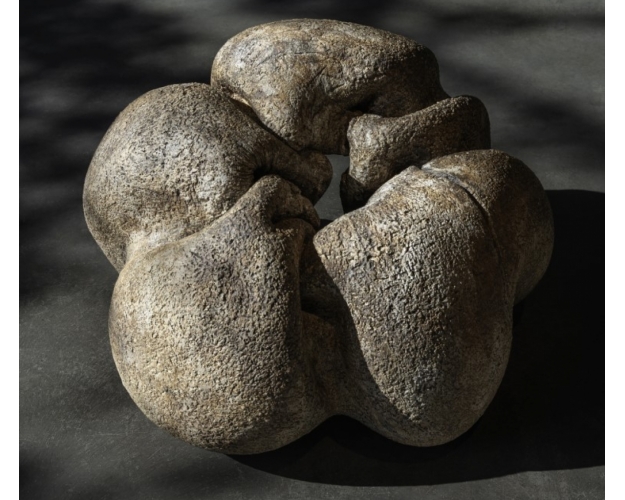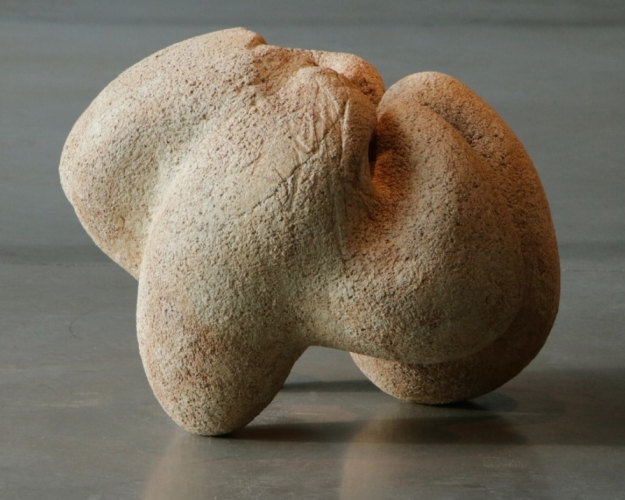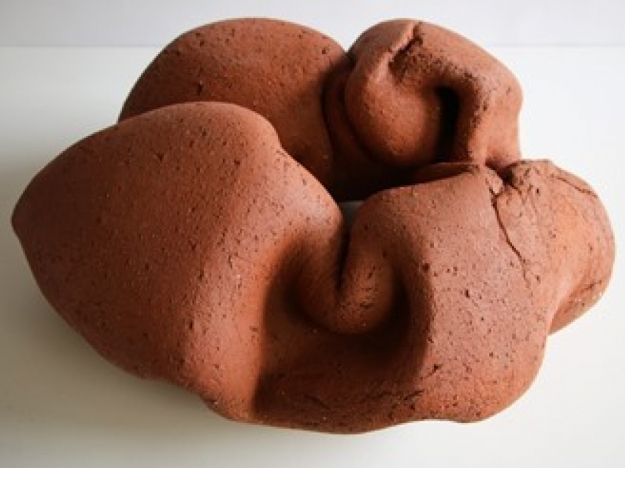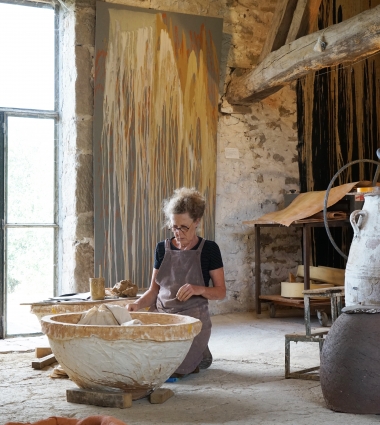
Jane Norbury
Curriculum Vitae
Born in 1958 and of British origin.
She studied art at the University of Bristol, at the Ecole des Beaux-Arts in Farnham (London) and at the Ecole des Beaux-arts in Aix-en-Provence, and teaches plastic arts in London.
She has been living in Burgundy for the past 27 years.
Exhibitions and installations in France, Japan, USA, Korea, etc.
I got to know Jane in 2019 during a workshop she organised at Alexandra Cool in Vollezele.
Exhibits for the 2nd time at gallery Adrienne D in Belgium.
Inspiration
Jane develops her work around the notion of fluidity.
"Our environment is governed by the circulation of fluids.
Their constant movement keeps our bodies alive, like the liquid sap that nourishes plants."
The movement in space, the movement of the body, the materiality of clay, the presence and absence of water are the fundamental themes she explores in her work.
Witnesses of this movement are her recent Passeuses earlier work Sillons.
With her engobes of different kinds of clay, she experiments in her latest work with pouring over textile canvases hung high and over wooden wall panels.
Technique
She makes the Passeuses by pushing, folding and wrapping clay in damp cloths in large plaster moulds.
The wavy forms of the Sillons are obtained by rolling, lifting, folding, stacking and pressing together slabs of clay and hollow clay cylinders. Jane always pushes and works the structures from the inside, and with the grooves she obtains the effect of an undulating skin. On the outside, no handprints are noticeable, only the energy of movement.
Sometimes she draws grooves in the leather-hard clay, paints them with white engobe and then tamps the engobe away to reinforce the undulations.
he Passeuses she makes by pushing clay, folding it, wrapping it in damp cloths in large plaster moulds.
The wavy shapes of the Sillons are obtained by rolling, lifting, folding, stacking and pressing together slabs of clay and hollow clay cylinders. Jane always pushes and works the structures from the inside, and with the grooves she obtains the effect of an undulating skin. On the outside, no handprints are noticeable, only the energy of movement.
Sometimes she draws grooves in the leather-hard clay, paints them with white engobe and then tamps the engobe away to reinforce the undulations.


